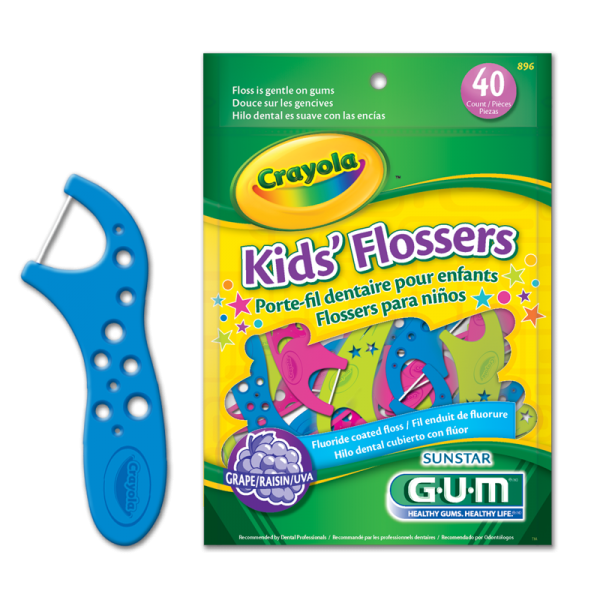We recently worked with Dr. Danielle, of Affiliated Pediatric Dentistry and Orthodontics, to ask some frequently asked questions in our mom community. We polled several moms, and these were the questions on everyone’s minds. We’re eager to share with you today, and hope that her expert insights and opinions offer you some knowledge and tips for your little one’s teeth!
For families with newborns, when is it important to start thinking about oral health? What should parents know in these early months?
Oral health practices can be implemented during the first few days after birth. After each feeding, wipe the baby’s gums with a clean, wet gauze pad or with a wet washcloth. This aids in removal of bacteria and residual food and children become more accustomed to having their mouth examined. When your infant’s teeth begin to erupt, it is important to clean them regularly by brushing all teeth gently with a child-size soft toothbrush.
Do you have any tips for gum stimulation, and can this help with teething?
Teething needs can vary from child to child. Gum stimulation with teething toys, soft-bristled toothbrushes, or even a finger silicone toothbrush can bring relief to a child who is teething.
 Do you have any tips on teething?
Do you have any tips on teething?
Stay away from over the counter numbing gels. They are not recommended as they can potentially lead to overdose and generally do not bring much relief. Cold teething toys or even a cold washcloth (freeze a wet washcloth) can bring relief and distraction to an infant or toddler. If your child uses a pacifier, you can chill the pacifier. You may also give an age-appropriate dose of Tylenol if your child appears to be in pain. 
When should I bring my child to the dentist for a visit? I’ve read that I should bring my child in the first year of life. Is this true? If so, why?
This is true and the short answer for “why” is to establish a “dental home.” For this reason The American Academy of Pediatric Dentistry recommends that children have their first dental visit within 6 months after the eruption of the first tooth or by 12 months of age. Establishing a dental home at a young age aids in cavity prevention and helps children become comfortable in the dental setting. An established dental home is also important should your child experience dental trauma. At this initial visit, the pediatric dentist will evaluate your child’s diet and give tailored recommendations, discuss oral hygiene, and apply a fluoride varnish treatment.
How often should a child see a pediatric dentist?
Children should see the pediatric dentist every 6 months for routine check-ups and cleanings. If the child is at a higher risk for cavities, the dentist may recommend a more frequent regimen to monitor the start or progression of cavities.
When is the appropriate age to use toothpaste?
You make begin using toothpaste as soon as the teeth erupt. Start with a fluoridated toothpaste and use a smear size (size of a grain of rice) until your child is 3 years old and then use a pea size from 3-5 years of age.

There is a lot of information out about using fluoride-free toothpaste. What is your opinion?
The earlier the teeth are getting fluoride on them – the better. Your child will not spit out the toothpaste at first so it is important to use the recommended amount for their age so they do not get too much fluoride.
When would you recommend that my child discontinue the use of a pacifier? Do you have any tips on thumb sucking, and when is the ideal time to push for children to stop doing it?
It is recommended that children eliminate sucking habits by the age of three, however actual quitting times will vary. The most important thing is not to force your will upon your child. A pacifier habit is much easier to break because the pacifier can “disappear.” I recommend to work on getting rid of the pacifier between 2 and 3 years of age. Remember there can be a lot of transitions at this time, such as potty training, toddler, bed, etc. Try not to make too many changes at once to ensure success in each transition. Be positive and use praise when your child is not sucking his/her thumb or their pacifier. Often as children become more social and begin school they stop on their own. The ultimate goal to stop sucking the thumb is before the permanent teeth begin to erupt around 6 years of age to ensure proper growth of permanent teeth and jaw.
What are the things I should look for in a pediatric dentist/practice?
Make sure the practitioner is a pediatric dentist – in other words a pediatric specialist. Pediatric dentists complete two years of residency training beyond dental school to receive that specialty degree. The pediatric dentist should be board-certified. Ask friends/neighbors or your pediatrician for a referral. Make sure you do your research and look at reviews to determine the best pediatric dentist for your child.
How early should I start flossing my child’s teeth, and do you have any tips on how parents can do this with young children?
Teeth need to be flossed as soon as they start to touch. The back molars usually come together around 3-4 years of age so that is when flossing is recommended. Some kids have plenty of spacing until they are 5 or 6 and some kids have teeth that are tightly touching as early as 2. The pediatric dentist will assess the spacing at each visit and let you know when it is appropriate to start flossing. I would recommend trying to floss while your child is lying down (imagine they are in a dental chair). It is much easier to access the back teeth when they are lying back than while they are standing facing you. There are wonderful floss sticks that have fun colors and are flavored and children seem to enjoy using those. 
 To learn more about Dr Danielle and Affiliated Pediatric Dentistry and Orthodontics or to schedule an appointment for your child(ren) visit their website:
To learn more about Dr Danielle and Affiliated Pediatric Dentistry and Orthodontics or to schedule an appointment for your child(ren) visit their website:












